
All categories
Featured selections
Trade Assurance
Buyer Central
Help Center
Get the app
Become a supplier

(2290 products available)
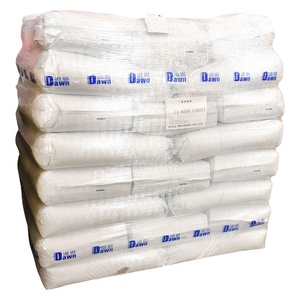












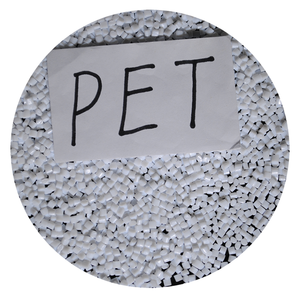
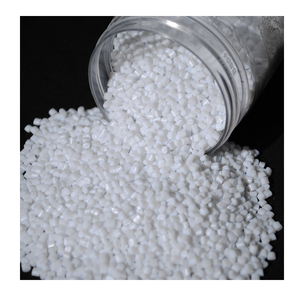
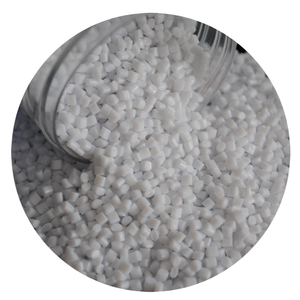

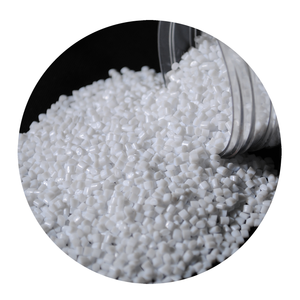
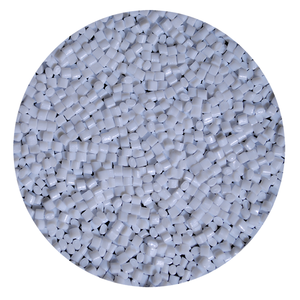




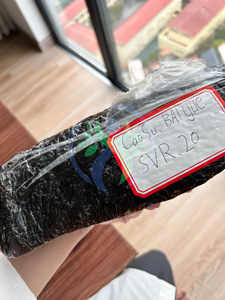
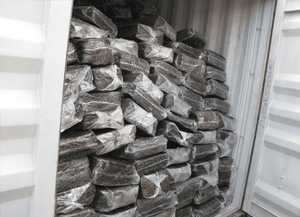
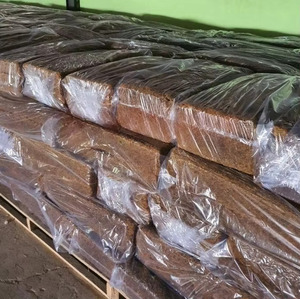





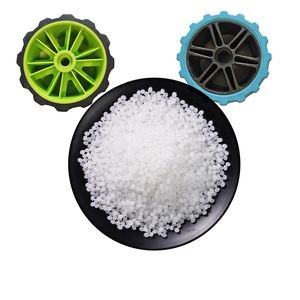



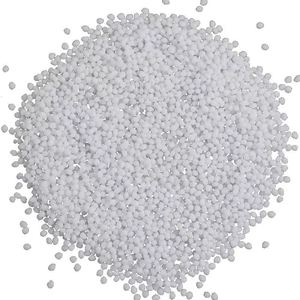




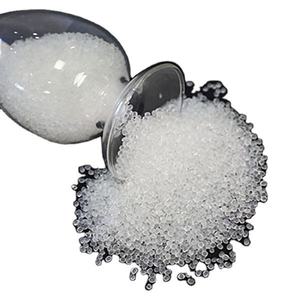
Thermoplastic elastomer (TPE), often referred to as "rubber-like plastic," is a versatile material that combines the properties of rubber and plastic. Varieties of TPE give It unique and specific characteristics that make it suitable for diverse applications.
especially in the footwear industry. Here are the main types:SEBS TPE (Styrene-Ethylene-Butylene-Styrene)
Compared to other types of TPR raw material , SEBS is more flexible and resistant to extreme temperatures. Its UV resistance also makes it suitable for outdoor applications. The material is often used in medical devices, automotive parts, and consumer goods due to its durability and soft-touch finish. Furthermore, its recyclability attribute aligns with the increasing global emphasis on sustainable packaging solutions.
SEPS TPE (Styrene-Ethylene-Propyrene-Styrene)
SEPS is a newer variant of TPE that offers even better elasticity and temperature resistance. This raw material's unique properties make it favored for high-performance applications like seals and gaskets in the automotive industry. Buyers seeking advanced materials for products requiring exceptional durability should consider SEPS TPE for its long-lasting performance and heat resistance properties.
SBS TPE (Styrene-Butadiene-Styrene)
This is another commonly used thermoplastic elastomer because of its good balance between performance and cost. The material is often used in adhesives, sealants, and coatings. It can also be used in the production of non-woven fabrics and is very ideal when used in light, flexible materials. Moreover, its easy processing and compatibility with various additives make it suitable for numerous industrial applications, adviced users to always check on their compatibilities.
TPU (Thermoplastic Polyurethane)
TPU is known for its outstanding abrasion resistance, which is why it is especially ideal in footwear, automotive interiors, and electronic casings. TPU is also used in protective gear, such as shin guards and knee pads, because it can withstand wear and tear and keep a flexible feel throughout. The outstanding balance of flexibility and toughness of this material allows its usage in applications that require long term durability and protection.
elastomer that is Thermoplastic Copolyester (TPC)
Thermoplastic copolyester elastomer has a very good temperature range and is highly resistant to chemicals. These features make it an ideal choice for automotive and industrial applications. TPC is often used in environments where extreme temperatures and harsh chemicals are a factor because of its durability. Some of its common uses are in wiring insulation and connectors, making it indispensable in applications that require reliability and safety.
THERMO plastic elastomer compounds have very distinct and beneficial features that give them an advantage over other materials. Below are some of their characteristic features:
Elastomer Properties
Thermoplastic elastomers are very flexible and have a rubbery feel to them. They can stretch up to a certain point and return to the normal shape they used before. Because of this, TPEs are good for applications where flexibility and comfort are required, such as in seals, gaskets, and footwear. TPU's elasticity helps enhance good performance in products that undergo frequent bending and stretching.
Thermoplastic Properties
One of the greatest TPR raw material benefits is that TPE can be melted and reprocessed. This feature allows the material to be molded into different shapes when exposed to heat. It also allows it to be recycled once it cools down. This thermoplastic property makes TPE highly versatile in production processes such as injection molding and extrusion because it enables easy handling of the materials during manufacturing.
Chemical Resistance
Good resistance to oils, chemicals, and UV radiation is one of the attributes of using thermoplastic elastomers. For this reason, TPEs find many applications in the automotive and medical fields. TPU, for instance, is often used in protective cases and equipment because of its good chemical and environmental resistance properties.
Thermal Stability
Many thermoplastic elastomers can withstand a wide range of temperatures. This allows them to maintain their mechanical properties even under extreme hot or cold weather. For instance, SEBS TPE is used in outdoor products due to its thermal stability properties. This makes it last even in extremely harsh weather conditions.
Surface Finish
Rubber-like feel and very smooth finishes are some of the characteristics of thermoplastic elastomers. This makes them attractive for consumer products. For example, SBS TPE is used in grips, handles, and cosmetic packaging due to its nice touch and aesthetic appearance. Moreover, the good feel finish of TPE enhances the usability of products in various applications, ranging from electronics to personal care items.
TPR raw material is a highly versatile material that has found many applications across various industries due to its excellent elasticity, durability, and ease of processing. Below are some common uses:
Shoemaking
TPR sheet material is highly ideal in the making of shoes, outsoles, midsoles, and insoles due to its elasticity and durability. The materials flexible properties enhance comfort, making them suitable for everyday footwear. Moreover, its lightweight and cushioned feel provide wearers with added benefits. In addition, the material can be molded into intricate designs, giving modern shoe designs their needed aesthetics and functional features.
Consumer Goods
Applications in household products like containers, toys, and tools also exist. TPU's exceptional wear resistance provides longevity and durability in items that are subject to frequent handling. Some of these products are those that require a soft touch yet rigid feel, like ergonomic handles and protecting cases for gadgets. In addition, it provides a non-slip surface that increases usability.
Automotive Industry
In the automotive industry, TPR materials are used in seals, gaskets, and hoses because of their chemical resistance properties. It is very crucial when used in automotive applications because it withstands oil and other fluids exposure without degrading. Moreover, their elasticity helps maintain proper sealing, enhancing energy efficiency and thus reducing leakages in vehicles.
Medical Applications
In the medical field, Thermoplastic elastomer is used in devices such as catheters and medical grips. TPU's biocompatibility makes it safe for medical purposes. Moreover, its flexibility allows it to be used in applications that need stretching and bending without breaking. Also, it is easy to sterilize and shall we say, process, making it ideal for applications in health and hygiene that require high cleanliness levels.
Sports and Protective Gear
TPR materials also have abrasion resistance, which makes them ideal for protective gear like helmets and knee pads. Likewise, a cushioning and gentle material offers extra protection and comfort in the sporting goods industry. Moreover, due to its durability, it guarantees long-term performance in such applications even in extreme conditions, such as outdoor sports.
Choosing the right TPR (thermoplastic rubber) raw material for specific applications requires careful consideration of various factors. Below are these factors:
Elasticity and Flexibility
Thermoplastic elastomers should possess the right degree of elasticity and flexibility required for the end product to be a success. For instance, polyurethane should be the material of choice for applications where high elasticity such as flexible seals and gaskets is needed. On the other hand, styrene-based TPE should be used for applications that need a softer touch such as grips and overlays.
Durability and Wear Resistance
Assessing the durability and wear resistance of materials is paramount in selecting suitable TPR raw materials for certain applications. For high-wear applications like automotive components and industrial products, use copolymer elastomers such as SEBS or SEPS. They offer good wear resistance and a long product life. In addition, thermoplastic polyurethane exhibits excellent abrasion resistance and is suitable for protective coverings and industrial applications.
Thermal and Chemical Resistance
It is imperative to know the operating conditions of the end product to select a TPR material with the right degree of thermal and chemical resistance. TPU and TPC are suitable for products exposed to high temperatures since they can withstand extreme heat. In situations involving exposure to chemicals, such as fuels or solvents in automotive and industrial applications, one should use TPE materials that have good chemical resistance, especially SEBS or TPU, which are effective against chemical degradation.
Processing and Molding Requirements
One must determine the processing method to be used when choosing TPU raw materials. Because of their easy processing, materials like SEBS and SBS are very ideal for injection molding and extrusion processes. On the other hand, TPU might need more complex processing because of its increased viscosity; however, the benefits it offers make it worthwhile for applications requiring tight tolerances.
Cost Considerations
Although performance is the key priority, cost also plays an important role in selecting TPR materials, especially for large-volume manufacturing. Even though TPU and TPC are comparatively more expensive to produce because of their superior performance, they are worth it in critical applications. Meanwhile, for lesser demanding applications, materials such as SBS or SEBS might be cost-effective without compromising many required performances.
A1: TPR materials can be bonded together using thermoplastic adhesives. These adhesives provide flexibility, which is a very important property in elastomer applications, where the materials are prone to stretching and bending. In addition, thermoplastic adhesives offer strong adhesion, fast curing times, and good resistance to chemicals, which makes them ideal for use in the automotive and footwear industries.
A2: The one TPE that is especially suited for both indoor and outdoor uses is the Styrene-Ethylene-Butylene-Styrene (SEBS) elastomer. Its impressive UV and ozone resistance make it particularly ideal for outdoor applications where exposure to harsh conditions is inevitable. In addition, its temperature range of -60℃ to 80℃ allows its usage in diverse environmental conditions.
A3: TPU is the material that actually stands out due to its exceptional impact resistance properties. It is uniquely formulated by blending PTMEG with polymeric MDI. This blend forms a strong and elastic network that offers high energy absorption. For this reason, it is ideal for use in applications that require durable materials, such as protective cases and industrial components.
A4: Thermoplastic elastomers compare very favorably to vulcanized rubber in terms of processing. While vulcanized rubber undergoes lengthy and labor-intensive curing processes to achieve elasticity, thermoplastic elastomers can simply be melted and molded. This property makes them more cost-effective and easier to mass-produce, thus allowing for greater flexibility in product design and quick market adjustments.
A5: The sustainability of TPR comes from its recyclability feature, which is not a characteristic feature of traditional rubber. Because TPR can be remolded and reused without losing the original material properties. This gives a huge potential for reducing waste in manufacturing processes. In addition, the growing usage of bio-based thermoplastics in producing TPR is reducing dependence on fossil fuels and petroleum-based resources, thus further enhancing environmental performance.